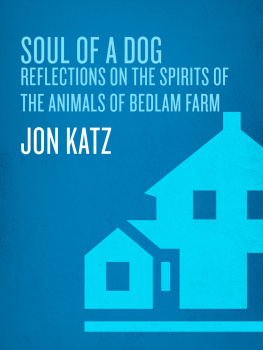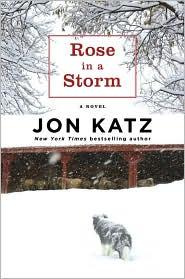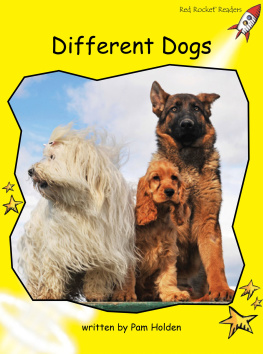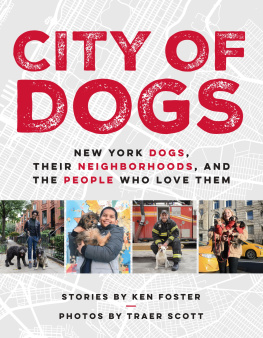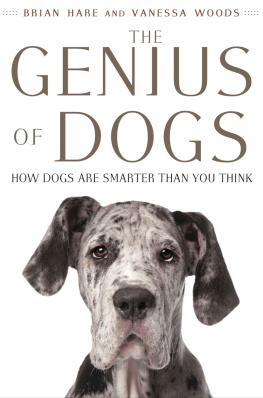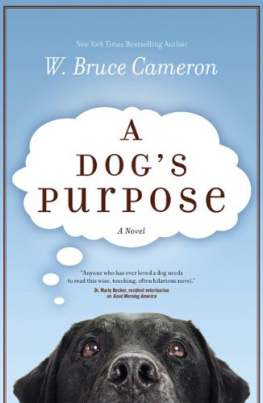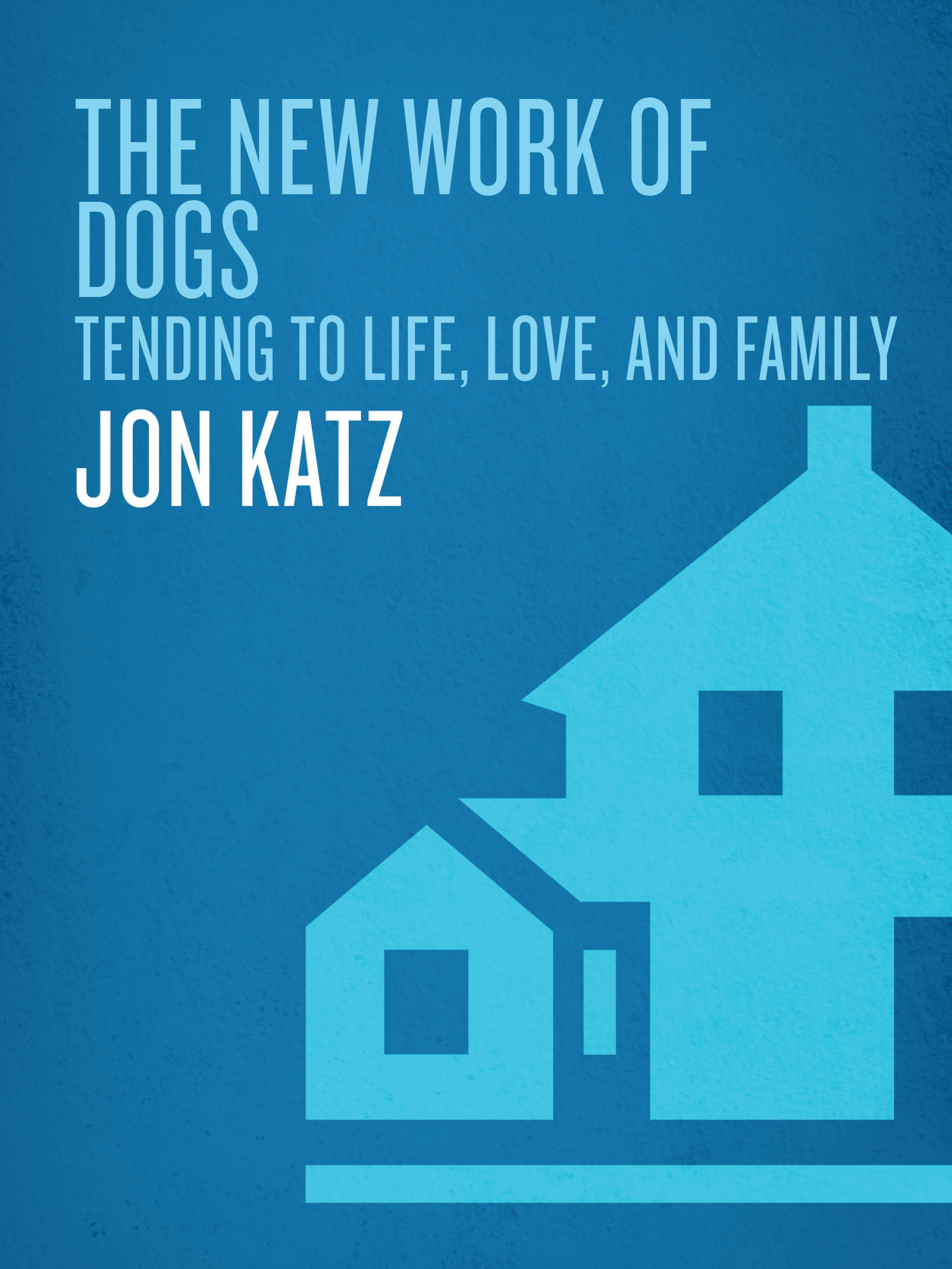Contents
It begins with my dog, now dead, who all his long life carried about in his head the brown eyes of my father, keen, loving, accepting, sorrowful, whatever; they were Daddys all right, handed on, except for their phosphorescent gleam tunneling the night which I have to concede was a separate gift.
from The Retrieval System
by M AXINE K UMIN
preface
MILLS RESERVATION is a heavily wooded county park that stretches along the hilly ridge marking the northwest boundary of my town, Montclair, New Jersey. A series of trails meanders through the forest, some offering spectacular views of Manhattan, just a half-hours drive east. The park, designed by the famed Frederick Law Olmsted, winds across 157 acres.
Like almost every bit of surviving greenery in northern New Jersey, this space feels under continuous siege from developers. Another hideous, overpriced house seems to pop up on its perimeter every month. The trails grow more crowded with families herding kids, with retirees out for walks, all thirsting for some green, a quiet place to stroll and gaze out at the majestic skyline across the Hudson.
Mills is also unofficial headquarters for the towns thriving dog universe. The first wave starts arriving at dawn: solitary people who want to walk alone with their canine pals; people with enormous or unreliable dogs who need a run before the park fills up; commuters who need to get their walks in before they hit the 7:10; dog-walking and doggie play groups led by people whose fanny packs are filled with balls, treats, bottled water (for the dogs), and poop bags.
The rescue people stick to the narrower, less-traveled paths, keeping careful watch over dogs freshly liberated from shelters or found on streets; saved from death, abuse, neglect, or abandonment; in various stages of physical and emotional rehab. They talk constantly to the sometimes nervous dogs, assessing the latest arrivals, watching for signs of illness or other trouble, soothing them, teaching them their new names, routines, commands.
The biggest invasion happens after work. Until dark, the woods echo with barks. People passing on the paths often introduce their dogs, though not usually themselves. Its a friendly group nonetheless, trading information about newly discovered spotslakes, trails, patches of woodswhere they can take dogs to run. Dogs who spend time here tend to grow fond of people, whose pockets are generally stuffed with biscuits to share.
Mills provides a neat microcosm of Americas canine experience: more dogs than ever, fewer places where they can go, fewer ways they can interact with the world.
Everyone except the newest newcomers is a scarred veteran of the struggle between dog lovers, the civilian population, and the county authorities, who launch sporadic ineffective crusades to drive the dogs and their people back, or at least contain them. In this corner of the megalopolis, as in most places, much of what dogs naturally dorun loose, gather in packs, chase after one another, have sex, roll in smelly stuffis frowned upon or illegal.
The best estimates Ive seenfrom the Humane Society of the United Statesindicate that non-dog households outnumber dog households at about a sixty-forty ratio, which is probably why dog people lose most of their intensifying civic struggles over leash laws and dog bans, curbs and prohibitions.
Dog owners are a stubborn lot, however, and Mills is one of the last treasured redoubts in this populated region for people who want to give their dogs a real run or a chance to play with other dogs. It draws Labs, terriers, rescued greyhounds and whippets, poodles and pit bulls, rottweilers and Heinz 57 mongrels. The purebreds and show dogs trot and run alongside the mutts; the high-strung working breeds sniff and woof at the family pets.
THERE , on any given day, you might meet Ginnie, a deaf pit bull who was shot in the head. Her owner, a lawyer named John who normally hates dogs, accidentally struck her with his car as she wandered, wounded, along a street in Belleville, just outside Newark. He took her in, to his own astonishment and the horror of his wife and neighbors, and now adores her. He hates dogs more than ever, he insists; its just that he loves Ginnie.
To see grumpy John communicating with Ginnie by stomping his footshe can feel the vibrationsand then gesturing elaborately while she looks at him lovingly, wags her tail, and learns to sit and stayresponding more quickly than most hearing petsis to glimpse the amazing emotional landscape that exists between some people and their dogs.
You might, alternatively, run into Sadie, the one-eyed shepherd-husky mix who was thrown from an overpass onto Interstate 280. She bounced off a speeding car and landed on the shoulder alongside a BMW driven by an ABC News producer, who proceeded to spend $4,000 on the veterinary surgery that saved her and gave her a phosphorescent eye-patch that glows in the darkuseful for locating her at night but occasionally unnerving to passersby. Sadie and Ginnie have become friends, and the sight of the two of them jogging along a path at dusk is memorable.
You might also encounter Shadow, the English sheepdog imported from Europe, strolling imperiously along on a leash festooned with ribbons won in herding trials and competitions. Or Ditz, the aptly named tiny Chihuahua who scoots safely between the legs of Moose, a mighty but genial bull mastiff. Moose is not to be confused with another mastiff who walks in Mills, accompanied by a bright-red parrot who rides on his collar, squawking curses at other dogs.
But it was Rushmore and his owner, Kate DeLand, who first planted the germ of the idea that became this book. Arriving at Mills with my border collies one fall morning, I came across these two standing at the edge of the parking area, both looking bewildered and uneasy.
Rushmore, a blue-eyed, classically beautiful German shepherd, paid my circling dogs no attention at all. He seemed, in fact, to be looking right past us.
Excuse me, Kate ventured. She was braver. This is our first time here. Im not sure what to do. Is there any protocol? She did look out of place: she was wearing too-tailored wool pants and an expensive-looking sweater, and she was equipped with none of the dog paraphernalia most people toted through the Reservation.
She was right to ask; a complex set of rules and conventions govern Mills, a critical understanding anywhere dog people congregate in crowded urban or suburban areas. In their own self-interest, responsible dog owners are a tough, self-policing lot.
FIRST , I told her, the wealthy residents of the adjacent new housing developments didnt like running into so many dogs and were calling the county sheriff to complain.
The police, therefore, had launched another of their periodic assaults, hiding in the woods in SUVs, popping out now and then to issue dire warnings or write hundred-and-fifty-dollar tickets when they spotted dogs being walked off-leash. Signs prohibiting dogs had sprouted all over the park.
The dog people seemed the more determined of the combatants; theyd never quit. Nondog lovers had other parks to stroll through, but for the dog people, it had come down to Mills. They knew the hard-pressed county cops wouldnt invest manpower in dog patrols for long. And they were used to guerrilla warfare.
They had taken to blowing whistles and shouting warnings when they spotted the police. Two groups even carried walkie-talkies and stationed spotters at the park entrance to spread the word when sheriffs deputies arrived, so that everybody could leash up.



